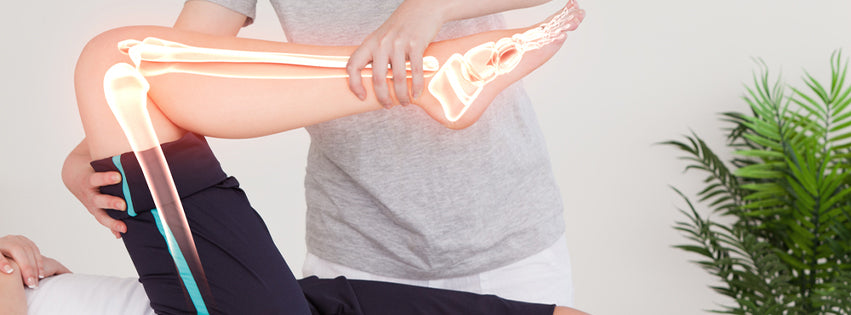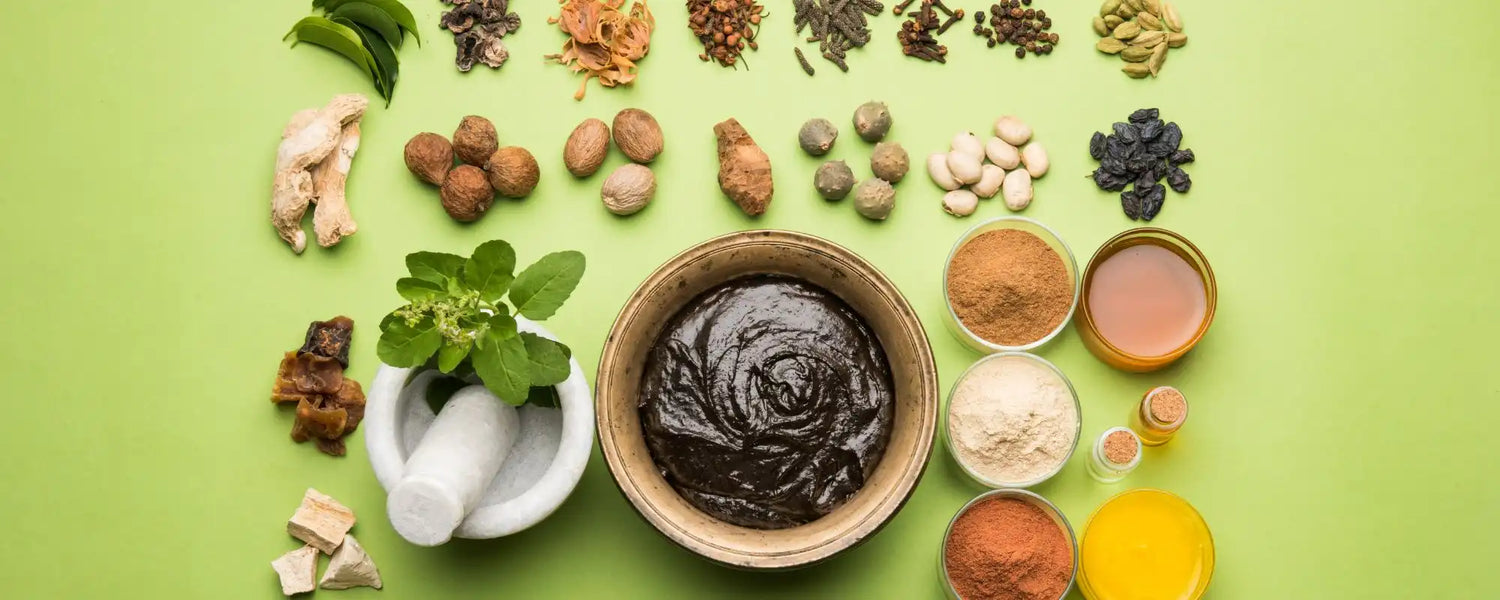Ayurveda, a Sanskrit word, means "knowledge of life." The art and science of Ayurveda aim to balance our internal and external worlds, with a special emphasis on holistic wellness.
Every experience we have, whether it be a material object, a concept, or an emotion, has certain characteristics. These characteristics are classified in the Ayurvedic scriptures as gunas and doshas. Understanding whether gunas have become excessive or inadequate is the cornerstone of Ayurvedic treatment, as this is known to induce doshic imbalance and result in sickness.
The Atharva Veda, the final of the four Vedas, contains elements of the ancient Hindu medical system, which relies on food, herbal remedies, and yogic breathing to promote physical equilibrium.
In this blog, we'll go in-depth to understand joint pain, including its causes, early warning signs, and how effectively ayurvedic treatment can relieve it.

Why do joints hurt?
At joints, bones connect. You can move your body because of the joints. Different types of joints include the shoulder, elbow, hip, and knee.
Joint pain, or arthralgia as it is known medically, is a discomfort, ache, or soreness felt in a joint. Most of the time, joint pain is brought on by a medical issue restricting your body's movement. Your joint and bone pain could range from slight to crippling. The severity of the pain often depends on the patient's age.
Although younger adults frequently experience joint pain and discomfort, joint-related musculoskeletal conditions affect roughly 20-25% of the Indian population who suffer from chronic pain.
What causes joint pains according to Ayurveda?
According to Ayurveda, soreness in the joints results from an imbalance of Vata, a form of functional energy, or Dosha, in the body.
This energy, which also causes movement, creates space between the joints. A Vyana vata (a kind of Vata) imbalance may cause circulation problems. As a result, the tissues are unable to absorb nutrition, and the joints become excruciatingly painful.
The imbalance of the doshas weakens the digestive fire, leading to the accumulation of toxins. Vata carries the toxins to the joints, where they cause discomfort.
Ayurveda says that maintaining the dosha is essential for managing joint discomfort. Therapies, dietary and lifestyle modifications, and Ayurvedic herbal supplements can all be used to achieve this.
Joint pain signs and symptoms
- discomfort in the joints
- Increase in size in that specific location
- Stiffness
- Moving the injured part is impossible.
- being unable to move the affected body area
- Restricted motion
These 5 ayurvedic treatments can help you get rid of joint pain
Eliminating discomfort, tenderness, swelling, and stiffness is part of treating joint issues and other associated disorders. The main goal is to let the affected person return to normal activities without experiencing more difficulties.
1. Turmeric
The simplest method is to consume one teaspoon of turmeric powder in a glass of hot milk each day. Turmeric curcumin's anti-inflammatory, antioxidant, and anti-cancer properties can dramatically lessen joint discomfort.
People with rheumatoid arthritis, in which the body's immune system begins attacking itself and causes inflammation and joint pain, might greatly benefit from its anti-inflammatory qualities. It also increases joint flexibility and stability, which makes it quite useful for treating knee pain.
Turmeric can be taken as a supplement in the form of tablets or capsules for joint care, or it can be used as a spice in the form of turmeric powder.
Turmeric Capsules can be purchased here.
2. Ginger
Ginger, a widely used and accessible spice, can dramatically reduce joint discomfort. It is a readily accessible spice that greatly lessens aches by combating the inflammatory response brought on by joint pain.
Like turmeric, ginger has anti-inflammatory qualities that can lessen joint discomfort while enhancing joint health.
Regular use of these spices can help restore the Vata dosha to its ideal levels by easing the discomfort of ama in the joints.
Ginger is a popular and safe plant that can be consumed as a spice, natural extract, herbal tea, or in capsule form. A few lifestyle changes that aid in balancing too much Vata in the joints are:
Buy Ginger Capsules here
3. Garlic
Garlic is a superfood that can help reduce joint pains and inflammation. It contains allicin, which has been shown to be effective against pain caused by osteoarthritis. Garlic also contains selenium and vitamin B6, both of which have been shown to help with arthritis pain. Selenium helps with the production of enzymes that heal joint tissue and vitamin B6 helps the body absorb nutrients from other foods.
Antioxidant properties of garlic help prevent oxidative stress on joints, which is another cause of joint pain.
Get your garlic capsule here
4. Fenugreek (Methi)
In traditional medicine, fenugreek seeds cure renal problems, cure colds, and lessen arthritis pain. Due to its anti-inflammatory and antioxidant characteristics, it is a tried-and-true ayurvedic treatment for knee pain. Additionally, consuming fenugreek seeds daily helps preserve your liver. Fenugreek seeds are advantageous to consume in the winter since they keep your body warm and ease joint pain brought on by a cold.
Get fenugreek capsules here.
5. Oil Massage
Since ancient times, ayurvedic oils have been used for their healing abilities. Abhyanga, or full-body warm oil massages, calm the body and mind, reducing physical pain. The affected area can be rubbed with coconut, olive, mustard, or garlic oil. These essential ayurvedic joint pain remedies are also effective treatments for joint pain.
Common Joint Care: Preventive
- Eat only organic, freshly prepared greens,
- keeping a regular sleep and wake-up schedule,
- performing abhyanga and giving oneself an oil massage every night, preferably with organic sesame oil (Tila-taila),
- Follow a diet that balances Vata, which includes eating at regular intervals,
- Bitter gourd and celery seeds are also quite advantageous.
- Have cumin, fennel, black pepper, and mint to eliminate the pollutants.
- When you perform mild yoga, the Pawanmuktasana movements help to lower the vata and enhance joint lubrication.
Panchakarma is one of the most extensive cleansing regimens available, and is an Ayurvedic practice. This ancient therapy involves five main techniques to release and remove accumulated poisons from deep within the tissues and restore the doshas to their correct locations in the body.
Our busy lifestyles need to prioritise our health and happiness. Renewing access to our innate intelligence is provided through Ayurveda.
Therefore, this traditional treatment holds out hope for a more peaceful future for both people and the environment. The ancient science of life holds the secret to our modern-day comprehensive development.
Stop suffering from joint pain, Contact us right away!





